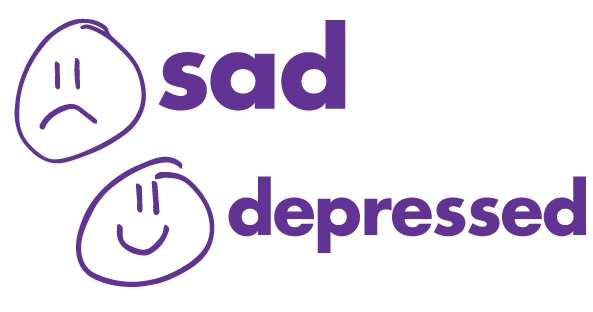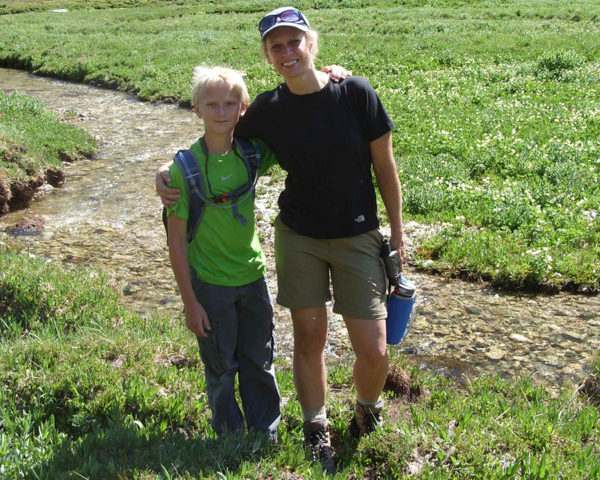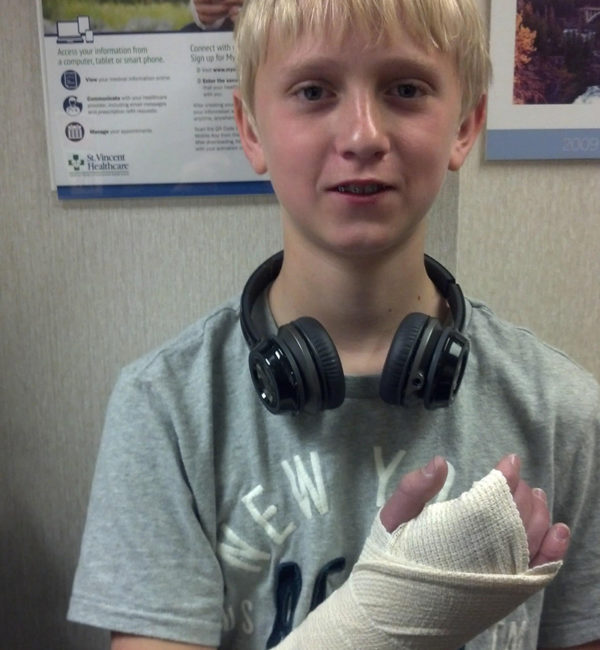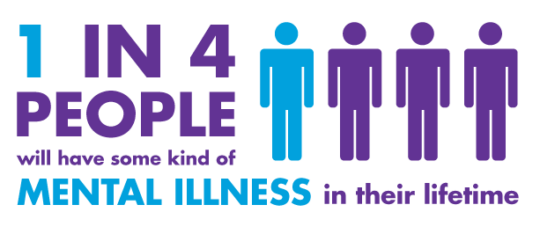

Before Sam took his own life, he was another Montana teen who embraced his toughness and didn’t complain about a bump or bruise. Because of the stigma around mental illness, that “no complaints” attitude made it difficult to see when he was truly hurting deep inside and to find him the help he needed.
Here’s his story, and how we can all Step In to help our friends, our loved ones, and ourselves in the fight against depression and mental illness to prevent another suicide.
There’s really no such thing as someone who “looks” like they have depression. Learn how to Step In to help others, or how to let others know you need help. We have tools that can help.



A MOTHER’S LOVE
At the risk of sounding like the worst mom in history, let me tell one of Sam’s favorite stories. When Sam was about seven, he jumped off the top of the porch swing and hurt his arm. He came in and it was clearly hurting so I put some ice on it and kissed it better (at seven that still worked!). After a few minutes, he was up and running around and never mentioned it again. About two weeks later, I looked at his arm and it had a bump on it — a bump on the middle of the bone didn’t seem right so I took him in to the doctor and sure enough, his arm was broken. Not my finest “mom” moment!
A few years later, he was at karate and fell on his wrist. Again, I put ice on it, checked it out, and give him an ibuprofen (which at that point was more effective than a kiss). Again, he didn’t say anything about it for about a week. Next time he said anything was when he went back to karate and it hurt when he hit someone! So, I took him to the doctor the next day and sure enough, broken. Sam turns to me and says “Well mom, you’re getting better at this, it was only a week this time.” (Gee thanks, Sam.) I wish that was the end of the story…but, it gets worse. The doctor asks Sam if he had broken that arm before and we both looked at each other and said “no, the other one but not this one”. Well, turns out he had an old break on that arm that the doctor saw on the x-ray. Of course, Sam thought it was hilarious that I never even brought him in for that one (not that he could even remember having a hurt arm….). Anyway, it all ended OK and it sure gave Sam a lot of laughs over the years!
So, why am I telling this particular story? Because it shows how we were as a family, and I would guess how many families are.
ASKING FOR HELP
Sam was a rough and tumble guy and got some bumps and bruises…actually, a lot of bumps and bruises. But after the initial “kiss it better” moment, he didn’t bring them up again. He tended to just deal with things. Looking back on Sam’s life, we knew he had a lot of “deep feelings.” He felt things — good and bad — very deeply. From the time he was young, I worried about his heart and we talked about it, but much like the broken arms, after he talked about it once, he rarely brought something up again. When we finally put the name “depression” to his situation shortly before his death, we talked about it and got him into counseling and for a couple of weeks it was a huge part of our lives. And then, in hindsight of course, it seemed that Sam decided he didn’t want it to be part of his life so he was just going to ignore it and relegate it to the back of his mind. But, like a broken arm, depression doesn’t just go away if you ignore it. However, unlike a broken arm, if you ignore mental illness, you can end up like Sam and your loved ones end up like us.
The thing is, Sam wasn’t unique in this aspect. We Montanans are proud of our toughness and one reason the arm story was one of Sam’s favorites is because it showed how tough he was…and, he liked to use it to tease me about my mom skills too. To be honest, Sam would not have been happy about this organization – not that he wouldn’t have wanted to try to help people or sponsor a run, but that he has become, quite literally, the poster child for mental illness.
He asked me repeatedly to keep it quiet…to not tell anyone how he felt or they would think he was weird. He asked us to “treat him normal” and said he just wanted to get back to the way things were before we put a name to his struggle. He did not want to have depression. He did not want to feel the way he did. He did not want to acknowledge it or give it a place in his life. Unfortunately, by doing that, and by us not understanding what was happening, Sam eventually decided the only way to stop the hurt was the route he took.



EDUCATION IS THE KEY
Who knows what would have happened if we had understood more about depression? Who knows if we could have saved him if we would have interpreted the signs more clearly? We use several signs at Sam’s Run event as a part of the outreach program. One of the signs says “The Top 10 Things NOT to Say to a Person with Depression.” The reason there is a top 10 list is that they are the things everyone says!! It’s like a piece of equipment — a warning label is not needed if no one uses it incorrectly. The point is, parenting a child with depression is something you need to learn about — not parent from the gut like we do for most things! You need to educate yourself and your child, the answers are not intuitive. On the contrary, the “what not to do” things are what is intuitive to say!
HOW WE CAN MOVE FORWARD AND STEP IN
If you are hurting and need to talk to someone, you can use a free,
anonymous help line 24 hours a day.
We encourage you to call 1-800-273-8255 to talk about anything at all at the
National Suicide Prevention Lifeline. Or, text CONNECT to 741-741 to get help.
If you have friends or family members who need help, call, or take a look at our list of local and national resources on this website.

GET EDUCATED AND GET HELP
Our family can’t go back and do it over, but we can move forward to try to help others. There are a lot of people here who have dealt with mental illness in the past or will deal with it in the future — one source estimates that 25% of people will have some sort of mental illness in their lives. That’s 1 in 4! So, educate yourself and your family. Use the resources that are out there and don’t allow your loved ones — or yourself — to ignore this illness. And if you don’t find yourself dealing with mental illness directly, try to be part of ending the stigma so people like Sam don’t feel like they have to hide it.
